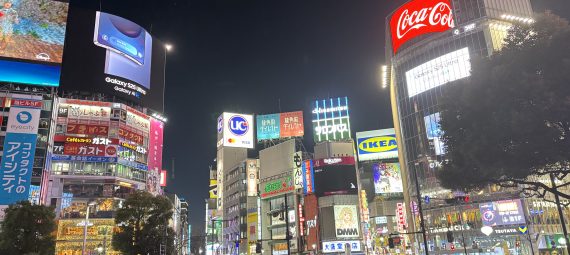Hello, my name is Max, and I am a second-year student studying History. I recently returned from a semester abroad studying at the University of Tokyo and through this blog post I hope to share some of my experiences studying and living in Japan. Having spent time in Japan during my gap year I was eager to go back and seeing that Southampton’s study abroad scheme had the opportunity to study in Japan it was a no brainer for me to go.
Before leaving:
Before I left for Japan, there was lots of admin for me to complete which required a lot of communication between me and both universities, in order to sort out things like what modules I will be studying. Also, you have to sort out getting a visa from the Japanese embassy and sort out travel and accommodation however Japanese universities let you know very early whether you have a place on their study abroad program so there is more than enough time to complete those things.
Arriving in Japan:
The flight is undoubtedly long, clocking in at roughly 14 hours from Heathrow to Tokyo’s Haneda airport, with a 15 hour return flight, but the long flight is definitely worth enduring. The climate in Tokyo is similar to the climate in the UK, so it wasn’t too much of a shock for me upon arrival.
Accommodation:
I applied and got accommodation with the University, which was a relatively easy but protracted process, and so I lived in student halls. The rooms were compact, but the facilities were excellent and maintained very well. I was living with other international students and Japanese students, so it was a fantastic opportunity to meet other international students early on. It was located pretty centrally in Tokyo close to one of the two campuses I studied at, but it meant that when I had to go to the other campus for classes I had to travel through the busiest areas of Tokyo, which at rush hour in the mornings was busy to say the least.
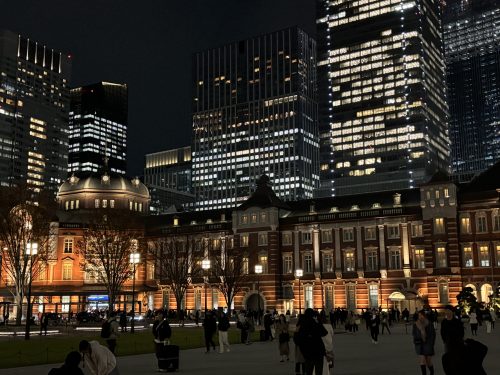
Getting around:
The public transport network in Japan is top quality, and particularly in Tokyo the underground system is ubiquitous, and notorious for its lack of delays. While in Tokyo I did lots of walking, the average Japanese person walks over 2000 more steps per day than the average American, as well as taking the train. Upon arrival, I was pretty familiar with the public transport system having visited before and knew to add an IC card to my apple wallet. IC cards let you ride trains and buses and even shop with a single tap, so they are incredibly important to have.
Also, the bullet train is pretty surreal to travel on and is great for travelling outside of Tokyo quickly, as it can take you to basically anywhere in mainland Japan quickly.
Flying is also really easy as well and fairly cheap domestically, as transport links to and from the airport are excellent, and so I was able to visit places like Okinawa and Hokkaido easily.
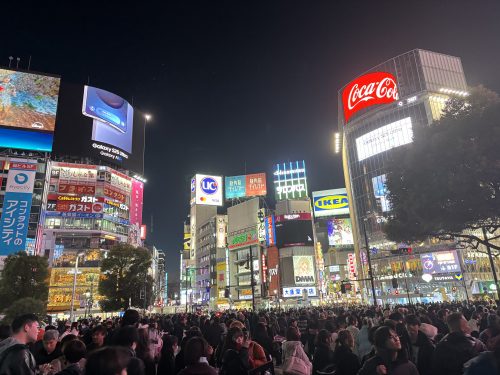
Tokyo as a city:
Tokyo is up there with London and New York as potentially my favourite city, it is an extraordinary place. To be honest it kind of feels like being in a movie going through Tokyo, particularly at night. If I had to choose one word to describe it, it would be ethereal. At points life doesn’t even feel real and it feels like you’re in some sort of dreamscape, particularly if you visit some of the contemporary art exhibits like the TeamLab exhibits in Tokyo or even in Fukuoka and Osaka. It is so different to western cities but also at the same time increasingly similar, due to the Americanisation slowly taking place, which makes cities like Kyoto even more unique.
What stood out to me most was the dual character of the city. On one hand, Tokyo is a centre of technological innovation, with dazzling LED-lit neighbourhoods like Shibuya and Akihabara. On the other, it’s deeply rooted in tradition: ancient shrines like Meiji Jingu, are nestled within lush urban forests, which provide a quiet counterpoint to the frenzy of nearby Shibuya. Even in a metropolis of nearly 14 million people, you are never far away from a place where you can experience a moment of quiet. Rather than being in tension, tradition and modernity coexist here in quiet collaboration.
Fashion is a big deal in Japan and in Tokyo specifically you are really immersed in Japanese fashion culture and its prevalence. Tokyo’s fashion culture is incredibly diverse and neighbourhood specific. In Harajuku, you’ll find experimental streetwear, colourful subcultures, and vintage shops tucked into alleyways. Ginza and Omotesando showcase refined minimalism and designer luxury while, Shimokitazawa and Koenji offer a more laid-back, thrifted, and artistic vibe, with many brands having many Japan-only exclusives.
It’s also remarkably safe, there is virtually 0 petty crime and there is nowhere where you feel like you’re in any semblance of danger. The collective investment in public order and cleanliness added to a strong sense of mutual respect, one that extended to both residents and visitors.
Also, while living in Tokyo it is very easy to live without knowing any Japanese, as most signs are in both Japanese and English, although I probably would recommend starting to learn it if you want to go for a full year. I was able to get by just fine without knowing any Japanese bar 10 or 20 basic words and phrases but living there has made me want to start learning Japanese, as I definitely plan to visit again as soon as possible.
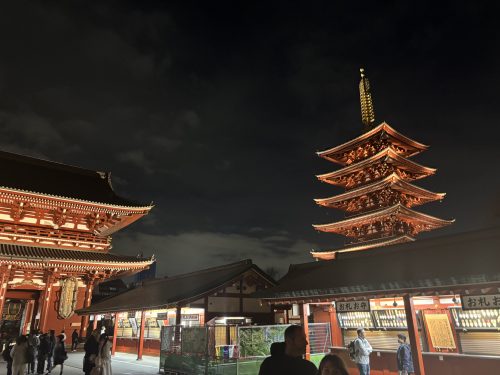
Social Life:
The orientation week at the beginning of the university semester gave me the opportunity to meet other international students, where I made some great friends. Also, I joined the university football and tennis teams, which were among the variety of clubs (known as circles) international students can join and were a great way to also befriend Japanese students.
Tokyo is a very social city, going to izakayas and karaoke bars are commonplace amongst both Japanese people and internationals, and with the size of Tokyo there are so many places to go out all throughout the city, some loud and energetic, others quiet and intimate, and they are cheaper than their UK equivalents. And with Tokyo being so populous it can be very busy and definitely feels similar to being in other major cities like London, perhaps to an even greater extent.

Academic Life:
Academic life was not too rigorous, so I was able to spend more time exploring the city and experiencing what Japan has to offer. Nevertheless, the academic standards were excellent and I felt I really benefited studying at UTokyo, particularly from a standpoint of learning about history through a more Japanese/Asia-centric lens, and the teaching and facilities were top quality, befitting of its status as the best university in Japan and one of the best in the world. One of the campuses, the Hongo campus, I studied at is renowned for its historical architecture and had Japanese tourists visiting it all the time, and the other campus was located right next to Shibuya and was very modern.
I was able to choose more modules than I am able to in the UK and enjoyed the variety that it gave me. The way I was assessed was through coursework and essays over the semester, similar to how History assessments are in the UK, although unlike in the UK I had to quite a few presentations for each of my modules. Also, the semester dates are slightly different to the UK, as I left for Japan and started my semester before I would have started in the UK and also finished my semester, with only a one week break in the whole semester, a few weeks into the start of the second semester at Southampton, meaning I had to catch up on some work but in my opinion it was worth it.
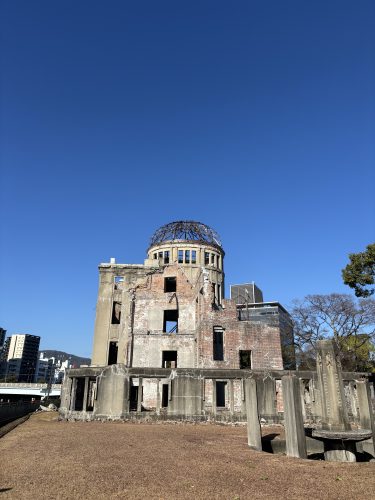
Highlights of my semester abroad:
- Going to a Yomiuri Giants baseball game
- Watching sumo-wrestling champions practice in their stable
- Seeing Snow monkeys in Nagano
- Halloween in Shibuya
- Seeing the Hokkaido snow festival
- Watching a Naoya Inoue boxing match in person
- Visiting the Hiroshima peace memorial
- New Year’s Eve in Osaka
- Walking up to the Fushimi Inari shrine in Kyoto
- Going up the tallest building in Japan – the Tokyo SkyTree
- Flying to Ishigaki (An island in Okinawa)
- Seeing the Daikoku car meet
- Shopping in Ginza
And so much more that I could mention.
Final thoughts:
I thoroughly enjoyed my experience at the University of Tokyo, I was able to make great friends with both international and Japanese students and would definitely say it has been the best part of my university life so far. Not only was it a chance to study at one of the best universities in the world, but it also gave me the opportunity to explore as much as I could of what an incredible country like Japan has to offer – an amazing experience, especially given it is on the other side of the world. Even though I spent six months there, there’s still so much I haven’t seen or done—even just within Tokyo. And while this blog only scratches the surface of my experience, the city offers so much for anyone to enjoy. Therefore, I would highly recommend anyone thinking of doing a semester abroad to do it in Tokyo.
Tips for a semester abroad in Tokyo:
- Get a Transportation IC Card Immediately.
- Get involved at university – Join a Club/ Circle.
- Learn and understand Japanese Etiquette.
- Visit Yokohama – it’s only 25 minutes on the train from Tokyo station.
- Explore as much of Tokyo and as much of Japan as possible.
- Budget Wisely—Tokyo can be expensive if you lose track of how much you’re spending, although the cost of living isn’t as high compared to the UK it adds up very quickly if you’re not careful.
- Explore More Than Just the Tourist Spots.
- Take Advantage of Domestic Travel.
- Take the bullet train – it’s cool.

